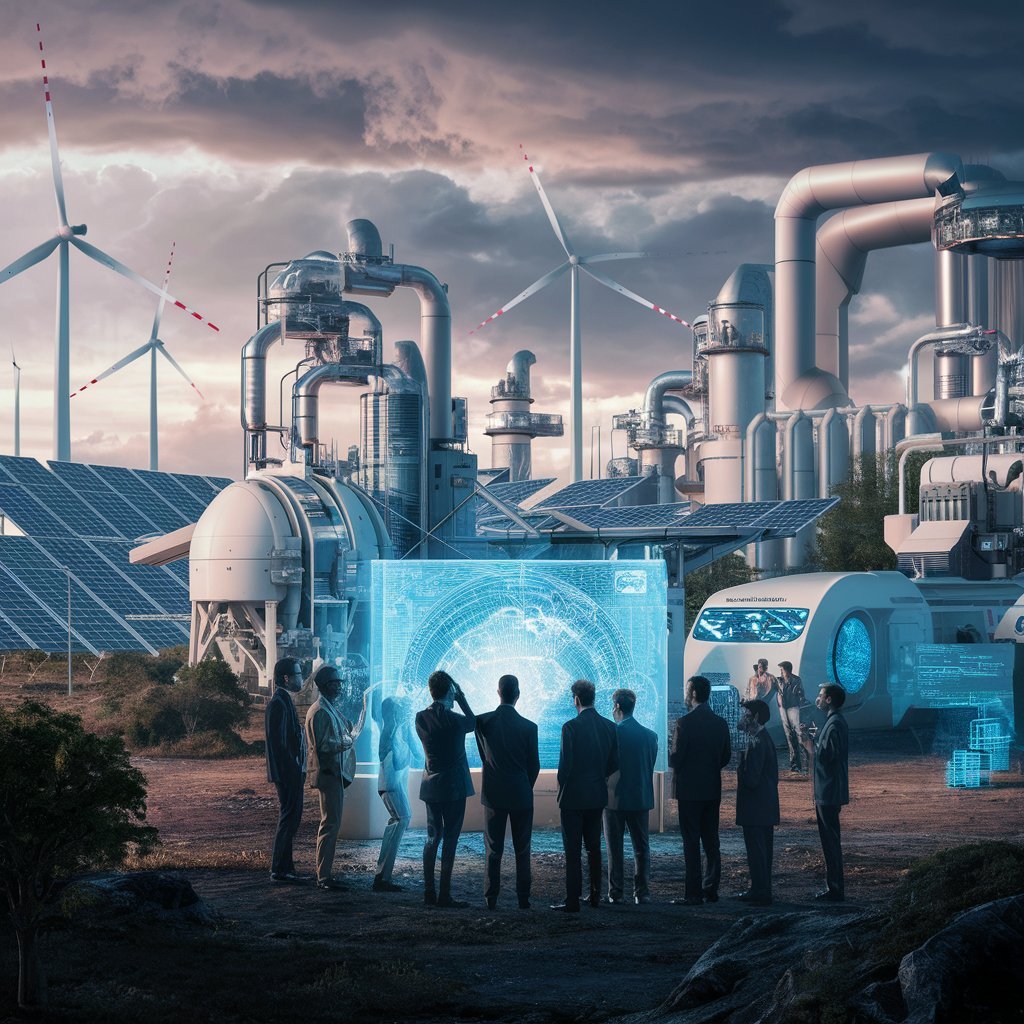As global climate concerns intensify, the shift toward decarbonisation has become a critical focus for industries worldwide. Decarbonisation isn’t just a buzzword but a transformative process reshaping industrial operations, energy consumption, and environmental impact. This guide explores what decarbonisation entails, its significance, the innovations driving this transition, and the promising future it heralds.
What Is Decarbonisation?
Decarbonisation refers to the reduction of carbon dioxide (CO2) emissions resulting from industrial activities, energy production, and other human-driven processes. The ultimate goal is to transition to a low-carbon or carbon-neutral economy, effectively mitigating climate change. Achieving this involves shifting from fossil fuels to renewable energy sources, enhancing energy efficiency, and adopting carbon capture and storage (CCS) technologies.
Industries play a pivotal role in this journey as they’re among the largest contributors to global CO2 emissions. Steel manufacturing, cement production, and chemical processing are particularly emissions-intensive sectors. Decarbonisation efforts in these industries are vital for achieving international climate goals, such as those outlined in the Paris Agreement.
The Benefits of Decarbonisation
Decarbonisation offers numerous advantages, not only for the environment but also for industries and society. Here are some key benefits:
- Environmental Impact: By reducing greenhouse gas emissions, decarbonisation helps to slow global warming, combat air pollution, and preserve biodiversity.
- Economic Opportunities: Transitioning to greener technologies opens new markets, stimulates innovation, and creates green jobs in renewable energy, energy efficiency, and carbon management sectors.
- Operational Efficiency: Implementing energy-efficient technologies and processes reduces energy costs, improving profitability for businesses in the long term.
- Regulatory Compliance: Governments worldwide are introducing stricter regulations on emissions. Adopting decarbonisation strategies ensures compliance and avoids penalties.
- Enhanced Reputation: Businesses that commit to sustainability attract eco-conscious consumers, investors, and partners, bolstering their brand image and competitiveness.
Innovations in Decarbonisation
The pursuit of decarbonisation has sparked a wave of creativity and technological advancement across various sectors. These innovations are critical for reducing carbon emissions, improving efficiency, and creating sustainable industrial practices. Below, we explore key innovations in greater detail.
Renewable Energy Integration
Industries are increasingly replacing fossil fuels with renewable energy sources like solar, wind, and hydropower. Advances in renewable energy technologies have made them more affordable and accessible:
- Solar Power: Photovoltaic cells have become more efficient, with bifacial solar panels and thin-film technologies enhancing energy capture and output.
- Wind Energy: Offshore wind farms are leveraging larger turbines to harness stronger winds at sea, increasing energy production capacity. Innovations like floating wind farms allow installations in deeper waters.
- Hydropower Modernization: New turbine designs and hybrid systems that combine hydropower with solar energy are making this traditional renewable resource more versatile.
Industries are also exploring innovative ways to store and manage renewable energy, such as grid-scale batteries and pumped hydroelectric storage, ensuring a consistent energy supply even when natural conditions fluctuate.
Hydrogen as a Clean Fuel
Hydrogen, particularly green hydrogen produced through electrolysis using renewable energy, has gained traction as a clean energy carrier. Key advancements include:
- Hydrogen Production Efficiency: Researchers are improving electrolyser technologies to reduce costs and increase production rates.
- Infrastructure Development: Innovations in hydrogen storage and transport, such as liquid organic hydrogen carriers (LOHCs) and solid-state hydrogen storage, are overcoming logistical challenges.
- Applications in Heavy Industries: Hydrogen is being used to replace coke in steelmaking and as a combustion fuel in cement kilns, significantly cutting emissions in these energy-intensive sectors.
Carbon Capture, Utilization, and Storage (CCUS)
CCUS technologies are at the forefront of industrial decarbonisation, enabling industries to capture and either store or repurpose CO2 emissions:
- Advanced Capture Techniques: Innovations such as solvent-based, membrane-based, and solid sorbent systems are improving the efficiency and cost-effectiveness of capturing CO2 from industrial flue gases.
- Carbon Utilization: Captured CO2 is increasingly being used as a raw material to produce chemicals, building materials, and fuels. For example, CO2 can be combined with hydrogen to create synthetic fuels or turned into aggregates for construction.
- Modular CCUS Solutions: Compact and scalable CCUS systems are making it easier for smaller industries to adopt this technology. Companies offering industrial decarbonisation solutions are leading the way in this space, providing cost-effective options for diverse applications.
Electrification of Industrial Processes
Electrification is transforming how industries operate by reducing reliance on fossil fuels. Key areas of innovation include:
- Electric Furnaces: Advanced electric arc furnaces (EAFs) are being used in steel production, reducing CO2 emissions by replacing coal-based blast furnaces.
- Electric Boilers and Heat Pumps: These technologies are being adopted for processes that require heat, particularly in the food, textile, and chemical industries.
Challenges to Overcome
While progress in decarbonisation is promising, industries face several challenges:
- High Costs: Many decarbonisation technologies require significant initial investment, which can be a barrier for small and medium-sized enterprises.
- Infrastructure Gaps: Developing the necessary infrastructure for renewable energy, hydrogen distribution, and CCUS systems takes time and substantial resources.
- Regulatory Uncertainty: Inconsistent regulations across regions create challenges for industries operating globally.
- Technical Limitations: Some processes, particularly in heavy industries, still lack viable low-carbon alternatives.
The Future of Industrial Decarbonisation
The future of decarbonisation is bright, driven by global commitments to net-zero targets and continuous technological advancements. Here’s what we can expect:
- Policy and Investment: Governments and private sectors will likely increase investments in clean technologies, supported by robust policies and financial incentives.
- Technological Breakthroughs: Emerging technologies, such as advanced batteries for energy storage and direct air capture systems, will enhance decarbonisation efforts.
- Sectoral Collaboration: Cross-sector partnerships will drive innovation and knowledge sharing, accelerating the adoption of best practices.
- Consumer Demand: Growing consumer awareness and demand for sustainable products will push industries to prioritize decarbonisation.
- Global Impact: As industrial decarbonisation scales up, it will contribute significantly to achieving global climate goals, ensuring a sustainable and resilient future for all.
Conclusion
Decarbonisation represents a transformative journey for industries, balancing environmental responsibility with economic growth. Through innovative technologies and collective action, industries are paving the way for a sustainable future. By embracing solutions like renewable energy, hydrogen fuel, and carbon capture, they’re not only mitigating climate change but also unlocking new opportunities for growth and innovation. As the momentum for decarbonisation continues, the future promises a cleaner, greener, and more resilient industrial landscape.




